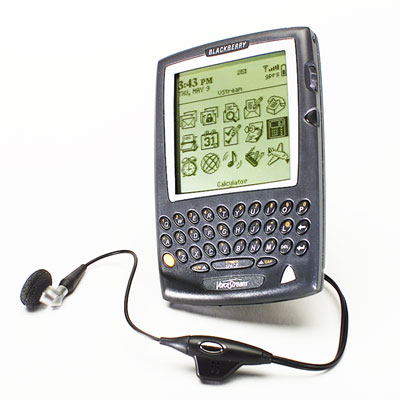Technology is understood as the manipulation of the physical world to achieve human goals. Numerous people in Canada have innovated or invented new technologies in response to human needs and desires. These inventions and innovations have changed the way people work, communicate and understand the world around them. Below is a list of some of the technological inventions and innovations developed in Canada. Do you recognize any of these gadgets?
Steam-Operated Foghorn
The steam-operated foghorn is a technological innovation that improved maritime safety and saved the lives of countless fog-bound mariners. The device was developed by Robert Foulis, a civil engineer, who relocated to Saint John, New Brunswick in 1822. (See also Engineering.)
Foulis was inspired to create the foghorn following the 1854 sinking of the SS Arctic, a ship that collided with another steamer off the coast of Newfoundland due to heavy fog. Foulis hypothesized that a steam whistle that used a system of coded blasts could be an effective fog alarm. Each location would emit a different code to help mariners mark their specific location.
In 1859, Foulis’ steam-powered foghorn was installed on Partridge Island. Foulis never patented or profited from his steam foghorn. In fact, he was not recognized as the inventor of the device until an 1864 government report.
Jolly Jumper
Olivia Poole was one of the first Indigenous women in Canada to patent an invention, the Jolly Jumper.
Poole was raised on the Ojibwe White Earth Reservation in Minnesota before moving to Ontario and settling in Vancouver in 1942. In 1910, after Poole had her first baby, she remembered how mothers on White Earth Reservation used cradleboards as baby carriers. Cradleboards allowed mothers and caregivers greater freedom to work or perform their daily routine while their baby was safely secured on the board. Some mothers suspended cradleboards from a sturdy tree branch or structure to act as a hammock or swing, providing the baby with amusement. Inspired by the cradleboard, Poole created a similar device that allowed the baby’s legs to dangle freely. Poole called her invention the “Jolly Jumper” and she used it for all seven of her children.
Poole’s family convinced her to market her invention. By the early 1950s, Poole’s Jolly Jumper went into mass production. By 1957, Poole patented her Jolly Jumper. The Poole family sold the business in the 1960s and today the Jolly Jumper brand is owned by a company based in Mississauga, Ontario.
Converto-Braille
The Converto-Braille is a computerized machine that converts Latin-alphabet texts to Braille, a system of writing used by people who are visually impaired. The Converto-Braille was invented by Roland Galarneau from Hull, Quebec.
Galarneau, who was born with 2 per cent of his vision, was inspired to invent the device based on his lived experiences. In the early 1960s he developed the idea for a computerized machine that would convert Latin-alphabet texts into Braille. He thought that if Braille became easier and cheaper to produce, more people would read it and more up-to-date texts would be published. Working from his basement workshop, Galarneau invented the Converto-Braille, a computerized printer capable of transcribing text into Braille at 100 words per minute. Galarneau developed faster versions of the Converto-Braille in the 1970s.
The Converto-Braille was a landmark innovation for people with visual impairments, as it increased their access to textbooks and other written information.
Canadarm
The Canadarm was a remote-controlled mechanical arm, also known as the Shuttle Remote Manipulator System (SRMS). The $110-million Canadarm development program was largely carried out by Canadian industry, under the direction of the National Research Council of Canada. The industrial team, led by Spar Aerospace Ltd., included CAE Electronics Ltd. and DSMA Atcon Ltd. The Canadarm was signed over to NASA in February 1981, at Spar's Toronto plant, where it was built. After being carefully trucked to the Kennedy Space Center, it was integrated into the space shuttle Columbia in June.
The Canadarm’s first flight was with the space shuttle Columbia on 13 November 1981. During its 30-year career with NASA’s Space Shuttle Program, the robotic arm deployed, captured and repaired satellites, positioned astronauts, maintained equipment, and moved cargo.
While the Canadarm retired in July 2011 (following the Space Shuttle Program’s final mission), its legacy lives on. The Canadarm established Canada’s reputation as a leader in technological innovation and inspired a series of other Canadian robotics used on the International Space Station, including Canadarm2.
BlackBerry
BlackBerry Limited (formerly Research In Motion) is a mobile communications company that was founded in 1984 by Mike Lazaridis and Doug Fregin in Waterloo, Ontario. The precursor to the BlackBerry smartphone was the RIM Inter@ctive Pager 900, introduced in 1996. The two-way pager was equipped with a QWERTY keypad and capable of sending faxes and emails.
Did you know?
When it came to naming RIM’s new device the RIM Inter@ctive Pager 900, branding executives felt its keyboard resembled strawberry seeds, which led to exploring the names of fruits and vegetables. They eventually landed on BlackBerry, as it matched the device’s black casing.
In 2002, the BlackBerry 5810 was released — the first device from RIM able to make calls. Following the release of the smartphone in 2002, BlackBerrys quickly became must-have pieces of technology, first among business people and later the general public. The BlackBerry revolutionized communication and helped create a market for smartphone devices.

 Share on Facebook
Share on Facebook Share on X
Share on X Share by Email
Share by Email Share on Google Classroom
Share on Google Classroom









